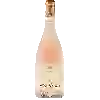
Château Ollieux RomanisLe Hameau des Ollieux Nature
In the mouth this red wine is a powerful with a nice balance between acidity and tannins.
This wine generally goes well with beef, veal or pasta.
Taste structure of the Le Hameau des Ollieux Nature from the Château Ollieux Romanis
Light | Bold | |
Smooth | Tannic | |
Dry | Sweet | |
Soft | Acidic |
In the mouth the Le Hameau des Ollieux Nature of Château Ollieux Romanis in the region of Languedoc-Roussillon is a powerful with a nice balance between acidity and tannins.
Food and wine pairings with Le Hameau des Ollieux Nature
Pairings that work perfectly with Le Hameau des Ollieux Nature
Original food and wine pairings with Le Hameau des Ollieux Nature
The Le Hameau des Ollieux Nature of Château Ollieux Romanis matches generally quite well with dishes of beef, pasta or veal such as recipes of beef stew provencal style, pasta with boursin or mouse of lamb with thyme.
Details and technical informations about Château Ollieux Romanis's Le Hameau des Ollieux Nature.
Discover the grape variety: Gold
Intraspecific crossing between A 3-94 (Hamburg Muscat x Sultana) and California K 3-78 (Hamburg Muscat x Queen of the Vines) obtained in the United States (California) in 1958 by Harold Paul Olmo (1909/2006). It can also be found in Greece, Cyprus, etc.
Last vintages of this wine
The best vintages of Le Hameau des Ollieux Nature from Château Ollieux Romanis are 2016, 2012, 2015, 2013
Informations about the Château Ollieux Romanis
The Château Ollieux Romanis is one of of the world's great estates. It offers 50 wines for sale in the of Languedoc-Roussillon to come and discover on site or to buy online.
The wine region of Languedoc-Roussillon
Languedoc (formerly Coteaux du Languedoc) is a key appellation used in the Languedoc-Roussillon wine region of southern France. It covers Dry table wines of all three colors (red, white and rosé) from the entire region, but leaves Sweet and Sparkling wines to other more specialized appellations. About 75% of all Languedoc wines are red, with the remaining 25% split roughly down the middle between whites and rosés. The appellation covers most of the Languedoc region and almost a third of all the vineyards in France.
The word of the wine: Broker
In the past, he was a sort of fraud control agent who had to watch over the quality of merchant wines (he could carry a sword!). His function has evolved towards expertise (it was the brokers who established the famous 1855 classification in Bordeaux) and today he puts the producer in contact with the merchant.














